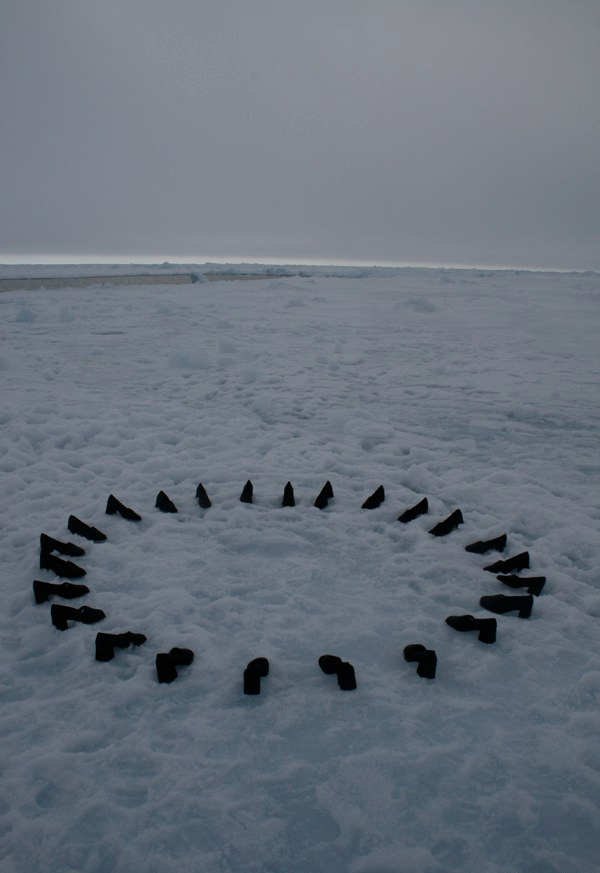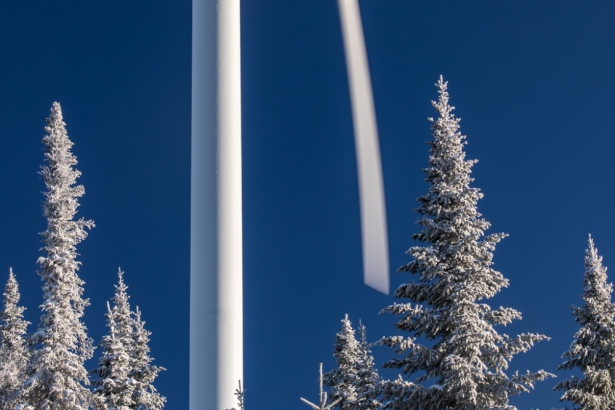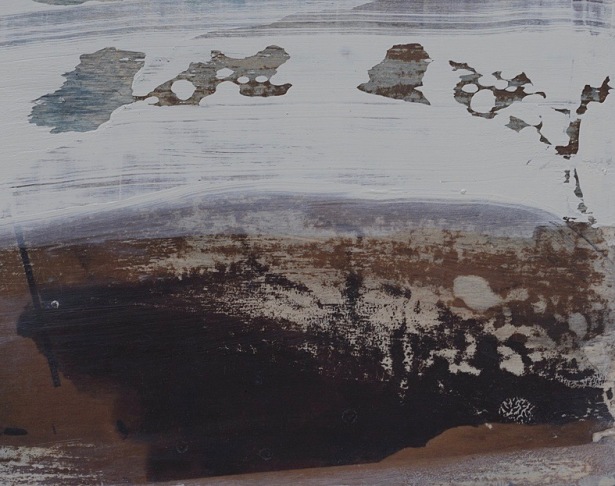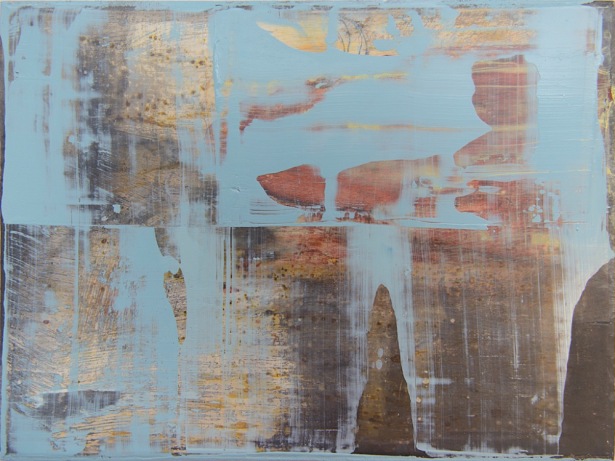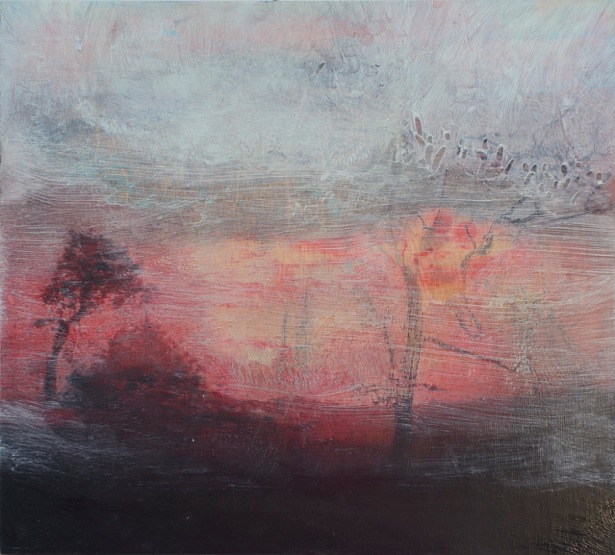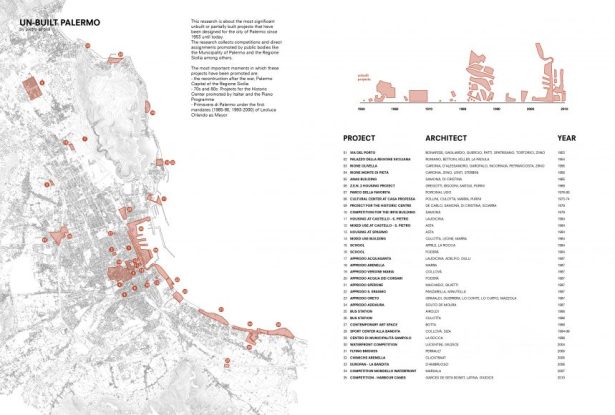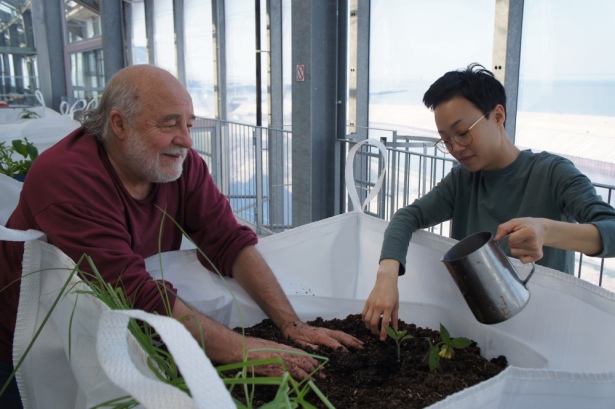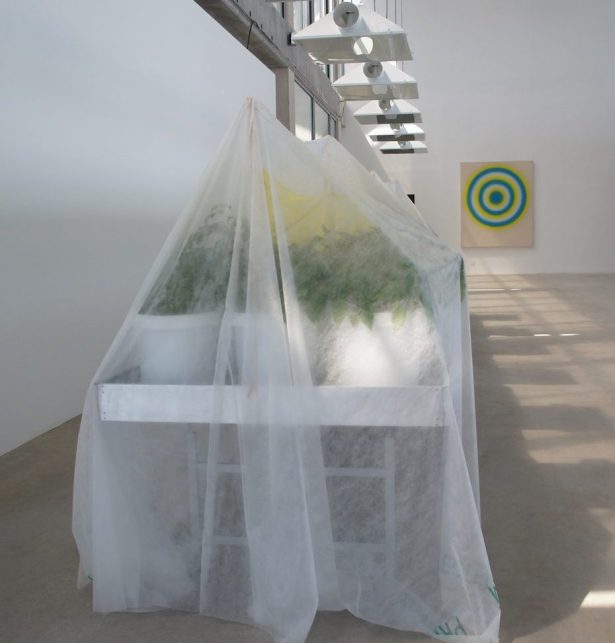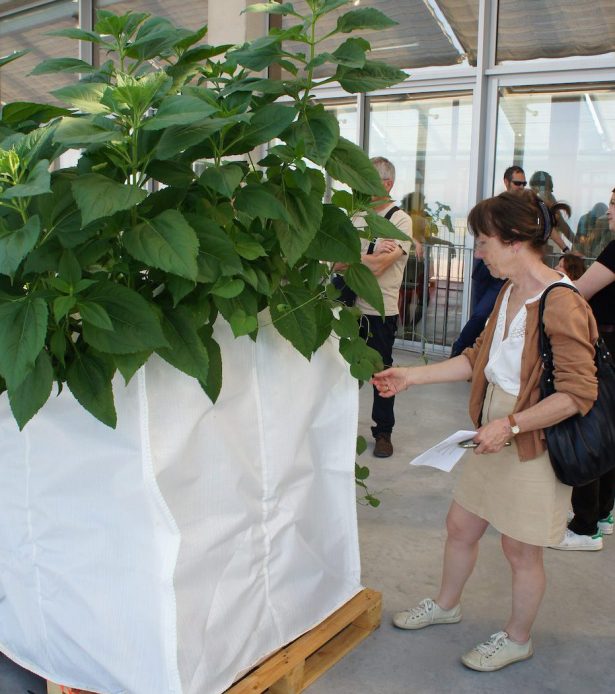This post comes from the Artists and Climate Change Blog
How is it July already? The year feels like it’s flying by, perhaps because so much is happening. This month features an interview with Chantal Bilodeau, a playwright and translator whose work focuses on science, policy, art, and climate change. She is also the Artistic Director of The Arctic Cycle, an organization created to support the writing, development and production of eight plays that look at the social and environmental changes taking place in the eight Arctic states. (You might remember Bilodeau from one of my Art and Activism of the Anthropocene panels that I hosted at the New York Society Library this past spring.)
We spoke about what drew her to the topic of climate change, how she thinks theater can help shape conversations about the subject, and about her annual workshop called the Artists & Climate Change Incubator, which takes place next month in New York City.
What first drew you to the topic of climate change, and why do you address the issue in your playwriting?
In 2007 I went to Alaska on a summer vacation and I fell in love: the vastness of the landscape, the quality of the light, the unforgiving climate, the colorful characters – the Arctic really grabbed me. This was on the heel of Al Gore’s first documentary An Inconvenient Truth and climate change was very much on my mind. When I came back home, I realized that very few people outside of the Arctic were talking about it, and even less had any awareness of it. Yet what was happening there was a direct consequence of what we were doing here. That’s when I started thinking about addressing climate change in my work. Beyond my own personal interest in the region, I saw a need to capture a moment in time, to acknowledge a transition, to bear witness to disruptions that are so massive that we will be still struggling to comprehend them for years to come.
What role can theater play in getting people to think more seriously about climate change?
From time immemorial, we have created culture through storytelling. Our behaviors, beliefs, and values are a direct result of the stories we tell each other, whether they are about hunting and gathering practices, economic systems, religious tenets, or laws. We first imagine worlds that we then all agree to turn to reality. If we want climate change to be taken seriously, if we want to shift towards a more sustainable way of living, we need these ideas to permeate our stories – and not just our scientific stories but our everyday stories about families, relationships, growing up, interacting with our environment, and dying.
Theatre is a great medium for telling stories. I often compare seeing a play with going shopping. When you shop, you get to try on clothes until you find the one thing that really fits you. When you go see a play, you get to try on – vicariously through the characters on stage – beliefs and values until you find the ones that really fit you. And even better, you get to do that in the company of fellow humans who are doing exactly the same thing.
This combination of storytelling, reflection, and communal experience is why I think theatre is a great ally for addressing climate change. We get to watch how people just like us navigate some of the challenges posed by climate change. We get to see, hear, and feel the climate crisis in three dimensions instead of staring at abstract charts and graphs and trying to figure out why we should care. We’re also given free rein to subjectively experience the full scope of the climate crisis, with all of the emotions that it might generate however inappropriate these might be.
Please tell us about the Artists & Climate Incubator. What is it, and what do you hope it accomplishes?
The Incubator is a 5-day intensive workshop offered every year in New York City at the beginning of August. It’s open to artists, activists, scientists, and educators who want to engage or further their engagement with climate change through artistic practices. Every day, a different guest speaker from the arts and/or the sciences interacts with the participants for a few hours to explore a topic. This is complemented by discussions and work sessions where participants can deepen their thinking about the intersection of arts and climate change and learn from each other.
For several years, I had been looking for a place to encounter artists and people from other fields who were interested in the role of the arts in addressing our climate crisis. Because there are still relatively few of us, I was longing for a community of peers to share successes and challenges and deepen our thinking around this burgeoning field. When I couldn’t find what I was looking for, I decided to create it; that’s how the Incubator was born. My goal with the Incubator is to share knowledge, and empower all of us to get better at what we do and have greater impact.
What kinds of participants are you hoping will join the Incubator?
This is the second year we’re offering the Incubator and what was most exciting about last year’s participants was the variety of fields they represented: leadership studies, theatre studies, activism, theatre, sound, music, visual arts, etc. The more varied the experience, the more we can learn from each other. Some participants were at the beginning of their careers while others were more advanced. A great deal were from the U.S. but others came from Europe. What bound us together was our shared commitment to using the arts to address climate change in a way that preserves the integrity of the artistic process while striving to have a social impact.
Given all we know about climate change, are you hopeful for the future?
It depends on how I think about the question. Do I think that the human species will survive? I don’t know, and truthfully, I’m not invested so much in our survival as I am in the way we live through and handle this crisis. It’s very possible that another species will replace us – homo sapiens is only one of a number of human species that once populated the earth. Why should we be the end of the line when every other species in the world continues to evolve? However, I am hopeful that life will survive, that no matter how much we deplete it, it will find new ways to thrive. Even if it takes millions or billions of years. But regardless of the outcome, we owe it to ourselves to live through this time with dignity. We owe it to ourselves and to every other creature on the planet to do everything in our power to turn this boat around. Terminally-ill patients don’t give up the fight because they know they’re going to die soon. On the contrary, in most cases, they make a point of living life to the fullest because they’re going to die soon. I hope that as a species we can show the same grace.
This post was originally published in Amy Brady’s “Burning Worlds†newsletter. Subscribe to get her newsletter delivered straight to your inbox.
___________________________
Amy Brady is the Deputy Publisher of Guernica magazine and Senior Editor of the Chicago Review of Books. Her writing about art, culture, and climate has appeared in the Village Voice, the Los Angeles Times, Pacific Standard, the New Republic, and other places. She is also the editor of the monthly newsletter “Burning Worlds,†which explores how artists and writers are thinking about climate change. She holds a PHD in English and is the recipient of a CLIR/Mellon Library of Congress Fellowship. Read more of her work at AmyBradyWrites.comand follow her on Twitter at @ingredient_x.Â
Artists and Climate Change is a blog that tracks artistic responses from all disciplines to the problem of climate change. It is both a study about what is being done, and a resource for anyone interested in the subject. Art has the power to reframe the conversation about our environmental crisis so it is inclusive, constructive, and conducive to action. Art can, and should, shape our values and behavior so we are better equipped to face the formidable challenge in front of us.







